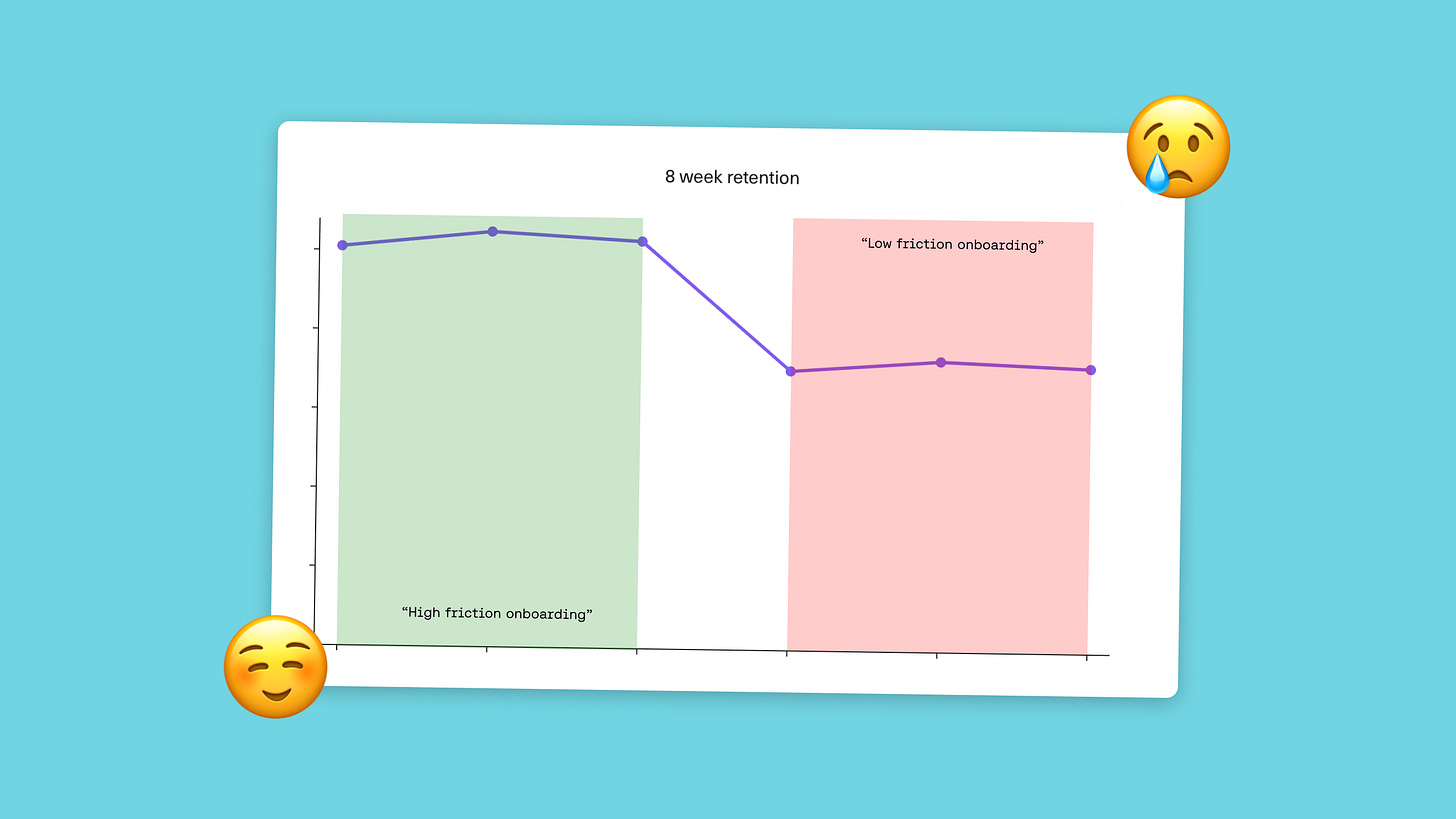Why you should add friction to your onboarding
Onboarding is more sales than it is product. It’s a game of convincing a new user to keep going.
Why do I need to connect a datasource to get started with Equals? And I have to put a credit card down too! You're losing everyone with all this friction! You've got to make it easy to get started.
We heard it over and over again. Following one of my hard-learned lessons about onboarding (learned while leading growth at Intercom) we required all new Equals users to connect a datasource (like a database or your Stripe account) to our spreadsheet product to get started. But we kept hearing from everyone – investors, team members, customers, prospects – that this friction hurt people's ability to get started. So, we removed the requirement. And then? Retention tanked.
Chasing the wrong goal
The thing people misunderstand about onboarding is the goal is not for people to complete onboarding. Your goal is for people to get their first moments of value from your product, commonly known as “activation”. All the talk about eliminating friction and removing steps is totally detached from this goal.
But wait, you can just move your set-up down funnel? Right? Just let people in! Remove the friction! What this misses is onboarding is more sales than it is product. It’s a game of convincing a new user to keep going. The allure of seeing a new product is the strongest motivator a new user has to complete complex set up tasks. The second that new user can see and use your product, their motivation for set up goes out the window.
This is why high friction onboarding outperforms. Obviously you don't want meaningless friction. What you want is to walk your users through a set of steps such that when they land in your product, they immediately understand the value proposition. At Intercom, this meant we always wanted you to land on your users list with some of your real users already there. At Equals, this means we want you to land in a spreadsheet which you can immediately pull live data into. These moments are the punch line. And you can't have the punch line without the set-up.
The allure of low-friction
And yet, maybe I was wrong. Maybe we did need to reduce the friction to get started. Maybe people would be enticed by other compelling features like Command+K (which requires no set-up) or our more current visual design (compared to Sheets, say). And so, going against my better judgment, we removed the datasource requirement.
The pain was not immediate. The difficult thing about these changes is they trick you. Initially, the metrics look better. Of course, a lot more people get through onboarding. A lot more people poke around. And so, for a moment, we thought maybe we'd disproven the idea that higher friction always outperforms. That was until we took a fresh look at our retention cohorts. The retention was horrendous. Yes, lots of people created accounts. Lots of people created spreadsheets. But 30% fewer users stuck around after 8 weeks. They never got the punch line.
So next time you're working on your onboarding. If you're unhappy with your conversion rates or your retention. Instead of thinking about what you can remove, think about what you can add. There are worse things than friction.




